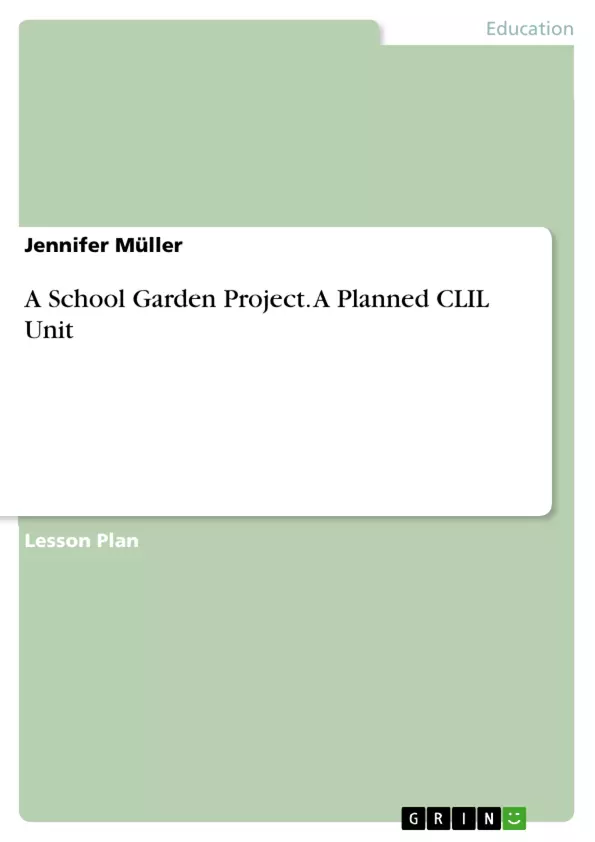One of the main characteristics of CLIL is that students learn about content e.g. science, ethics or physical educationand through an additional language other than their mother tongue. When it comes to evaluate the potential of CLIL, the pros and also the challenges of teaching content and language at the same time have to be considered. Therefore, it should also be differentiated that there are differences between Hard CLIL and Soft CLIL. Hard CLIL focuses on the main goal of acquisition of subject knowledge. It is taught by a teacher of this specific subject who has to follow the curriculum. Other than that, Soft CLIL puts emphasis on language benefits and takes up parts of the curriculum of a subject only. There, the teacher of a foreign language holds the lesson or units.
During our seminar, we focused on Soft CLIL but there is still a lack of already prepared and tested material for both types of CLIL. The choice of which CLIL is implemented often depends on several factors like teacher availability, amount of time, the capacity to implement CLIL in general, networking etc.13 It is obvious that there has to be thoughtful planning before implementing CLIL in schools. But not only before implementing CLIL in the classrooms but also while preparing specific units there has to be thoughtful planning as well because there is a lot to convey in CLIL lessons e.g the vocabulary and basic skills like reading, listening, writing, speaking as well as the subject content. To plan a good lesson, the teacher has to be and has to prepare much material using e.g. scaffolding and glossaries. This fact can cause time problems for the teacher. Apart from that a challenging factor could be the overload of subject input. Some students struggle with language issues and therefore could have problems to process the content in the appropriate depth. That makes it necessary to very closely supervise the process but this, depending on the number of students, can sometimes be quite challenging. The teacher has to provide a range of necessary vocabulary with subject terminology to make sure the students are able to follow the content.
Inhaltsverzeichnis (Table of Contents)
- School garden project – Herb witches
- Learning goals
- Aims of the sequence
- Lesson Plan-The two sequences I taught
- Differentiation
- Assesment
- Evaluation of my sequence
- A CLIL unit based on a picture book
- Learning objectives
- Sequences of the unit
- Core activities
- Expected practical outcomes
- Short essay
Zielsetzung und Themenschwerpunkte (Objectives and Key Themes)
This project aims to demonstrate the successful integration of English language learning with other subjects, specifically Science, Art, Physical Education and Ethics, within the context of a school garden project. It focuses on the cultivation and utilization of herbs, exploring their medicinal properties, appearance, and cultural significance. The project highlights the importance of interdisciplinary learning and its impact on student engagement and learning outcomes.
- Interdisciplinary learning and cross-curricular links
- The integration of English language learning with other subjects
- The cultivation and utilization of herbs
- The medicinal properties and cultural significance of herbs
- The development of student learning outcomes and engagement
Zusammenfassung der Kapitel (Chapter Summaries)
- School garden project – Herb witches: This chapter introduces the overall project, outlining the learning goals and aims. It provides a comprehensive overview of the cross-curricular links involved, encompassing subjects like Foreign Language, Science, Art, Physical Education, and Ethics. The chapter also delves into the specific learning objectives for each subject, emphasizing the practical application of knowledge in real-world scenarios.
- A CLIL unit based on a picture book: This chapter focuses on a specific CLIL unit, detailing its learning objectives, sequences, core activities, and anticipated practical outcomes. The unit utilizes a picture book as its foundation, offering a captivating and accessible approach to language learning. The chapter explores the various activities designed to enhance students' understanding and proficiency in both language and subject-specific content.
Schlüsselwörter (Keywords)
This project focuses on the keywords CLIL, cross-curricular links, school garden project, herb witches, interdisciplinary learning, English language learning, medicinal properties, herb names, technical terms, sensory games, tea creation, tea labels, and student engagement. The project also highlights the practical application of learning through hands-on activities and real-world experiences.
- Quote paper
- Jennifer Müller (Author), 2022, A School Garden Project. A Planned CLIL Unit, Munich, GRIN Verlag, https://www.grin.com/document/1356372



